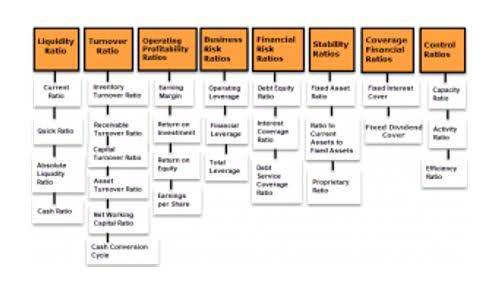Absorption Costing Income Statement Reconciliation Example

These often relate to accounting rules and getting a complete view of production expenses. This is the allocation of the cost of machinery and equipment over their useful life. Depreciation is considered a fixed cost in absorption costing because it remains constant regardless of production levels. Companies with a consistent demand for products benefits from absorption costing. It provides a straightforward and rigorous costing tool for active enterprises. It also takes into account fluctuating turnover because costs have been allocated to the items.
Essential for inventory valuation 🔗
- Under absorption costing, the fixed overhead costs allocated to the unsold 3,000 units remain in inventory on the balance sheet rather than being expensed in the income statement.
- The most obvious is the allocation of fixed overhead costs that marginal costing excludes.
- Absorption costing refers to the ascertainment of costs after they have been incurred.
- The main aim is to ensure that all manufacturing costs are absorbed by the products produced, making it easier for businesses to track profitability, set prices, and evaluate cost efficiency.
- It’s important to note that period costs are not included in full absorption costing.
- Indirect costs have become an increasingly important factor in the total production cost of products or services.
However to apply this method successfully the organizations need to consider caution while apportioning the costs, charging the inventory, and calculating the cost per unit. Once the production volume is decreased the overhead costs will be charged to a lower number of units which may result in lower profits. For instance, if the direct costs (materials and labor) for a chair are ₹500, and the allocated overhead costs (fixed and variable) are ₹100, the total cost of producing that chair would be ₹600. Absorption costing may report a higher net income during periods when inventory increases, as unsold units absorb a portion of the fixed manufacturing overhead.
Manage your inventory and bookkeeping easier

On the other hand, standard costing uses predetermined costs for materials, labor, and overhead to calculate the cost of a product. This method is useful for setting benchmarks and evaluating performance, but may not always reflect the actual costs incurred. Overall, absorption costing provides a more comprehensive view of costs, while standard costing is more QuickBooks ProAdvisor focused on cost control and efficiency. Unlike variable costing, which only considers direct variable costs and not fixed costs, absorption costing ensures that fixed overhead costs are spread across all units produced. This method is required under generally accepted accounting principles (GAAP) for external financial reporting. The difference between the absorption and variable costing methods centers on the treatment of fixed manufacturing overhead costs.
Skewed Profit and Loss
In order to understand how to prepare income statements using both methods, consider a scenario in which a company has no ending inventory in the first year but does have ending inventory in the second year. Outdoor Nation, a manufacturer of residential, tabletop propane heaters, wants to determine whether absorption costing or variable costing is better for internal decision-making. It manufactures \(5,000\) units annually and sells them for \(\$15\) per unit. The total of direct material, direct labor, and variable overhead is \(\$5\) per unit with an additional \(\$1\) in variable sales cost paid when the units are sold. Additionally, fixed overhead is \(\$15,000\) per year, and fixed sales and administrative expenses are \($21,000\) per year.

This method of valuing stocks has the effect of carrying over fixed costs from one period to another. Such a carry-over distorts the trading results besides vitiating cost results. (c) No distinction is drawn between fixed manufacturing cost and variable manufacturing cost. In the long run, all costs are to be recovered, whether it may be fixed or variable direct or indirect.

C. Total Cost of Production
- Variable costing is more useful than absorption costing if a company wishes to compare different product lines’ potential profitability.
- By capitalizing fixed costs within inventory, absorption costing ensures that unsold products retain a portion of these expenses on the balance sheet, rather than being immediately expensed in the income statement.
- It includes direct materials, direct labor, fixed manufacturing overhead, and variable manufacturing overhead, providing a full picture of production costs.
- Absorption costing is not as well understood as variable costing because of its financial statement limitations.
- Fixed manufacturing overhead costs remain constant regardless of the level of production.
- It is required by generally accepted accounting principles (GAAP) for external reporting.
Sometimes called full costing, is a way businesses calculate the total cost of making a product. It counts all the factory costs involved—direct materials, direct labor, as well as variable and fixed manufacturing overhead—as part of that product’s cost listed in inventory. This method includes labour and material costs and also fixed and variable manufacturing overhead costs. This article will provide you with the absorption costing formula and discuss its advantages and disadvantages and how it is different from variable and marginal costing. Under both methods, direct costs (materials and labor) and variable factory overhead costs are applied to the cost of the product. The difference between the two costing methods is gross vs net how the fixed factory overhead costs are treated.

Absorption Costing Vs Variable Costing
According to GAAP, both job costing and process costing are considered subtypes of absorption costing. For instance, consider an absorption costing formula apparel company producing both scarves and dresses in the same facility using identical fabric. Though both products share a common material, the amount of fabric and labor required for each differs significantly. The company’s cost accountants must precisely identify these varying factors and incorporate them into the absorption costing calculations for each product type. The allocation of costs refers to the distribution of overhead costs to the relevant departments.

It also have backorder management which will ensure that you never fall short of any inventory. Deskera Books will also help you to keep a track of your outstanding account receivables and account payables, hence ensuring you have a healthy cash flow. The inventory (10,000 pieces) in the company’s warehouse is evaluated at $600,000.
- This approach provides clearer insights into incremental production costs and profitability per unit but does not comply with GAAP for external reporting.
- The choice of costing method can significantly influence financial outcomes and business decisions.
- She holds a Bachelor of Science in Finance degree from Bridgewater State University and helps develop content strategies.
- Absorption costing is less useful when making short-term decisions, such as pricing for special orders or determining whether to discontinue a product.
- In the context of absorption costing, the absorption of overhead means that all forms of overhead (both fixed and variable) are included in the final product cost.
Furthermore, absorption costing is essential to submit other formal reporting and file taxes. Every production expense is allocated to all items, regardless of whether every made good is sold. In absorption costing, both fixed costs and variable costs are taken into account.
4: Comparing Absorption and Variable Costing
Another key advantage of the ABC method is to calculate overheads other than production overhead costs. The management can apply the same method across cost pools and activities to identify cost drivers. A key feature of ABC costing is the linking of overhead costs, manufacturing products, and overhead activities. Hence, it identifies activities and cost-drivers to allocate production costs. The absorption costing will not ensure the recovery of fixed cost if the actual sales volume is less than the estimated sales used to calculate the fixed overhead rate.

